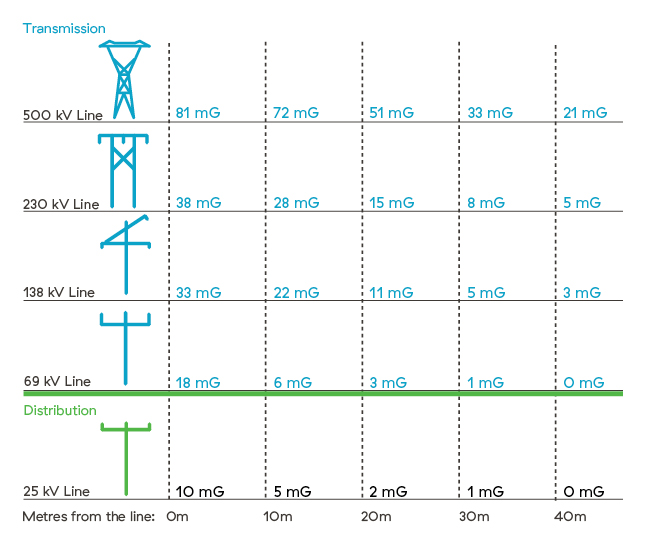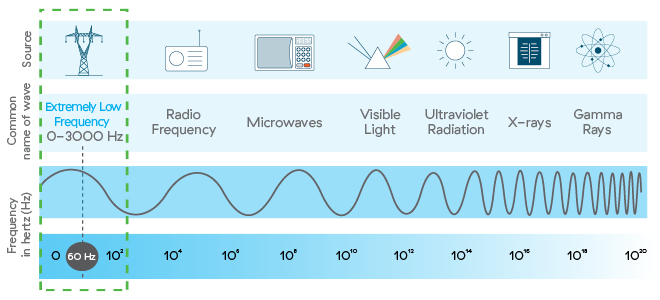Electric and magnetic fields from power lines
Electric and magnetic fields are part of our everyday lives
Electric and magnetic fields (EMF) are present everywhere electricity flows both inside and outside of your home. Sources of these fields include, appliances such as your oven and refrigerator, and electronic devices such as televisions, PVRs and your mobile phone. They're also given off by power lines and substations.
Although they're often referred to together, electric and magnetic fields are actually two separate components of electricity.
Electric fields: produced by voltage
- Electric fields are produced by the voltage in a wire.
- The strength of electric fields remains fairly constant, even when electricity isn’t being used.
- This means the electrical wiring in your home is producing electric field constantly, even when you’re not using your appliances.
The electric fields from transmission and distribution lines change very little because of the line’s stable voltage, and can easily be shielded. Trees, fences and buildings naturally reduce electric field strength and the walls and the roof of your home further reduces the electric field strength from equipment outside of your home.
Magnetic fields: produced by electric current
- Magnetic fields are produced when electricity is flowing, so they’re only present when an electrical appliance is turned on.
- As the flow of electricity (known as the current) increases, the magnetic fields increase.
- Magnetic fields can pass through most objects and can’t be blocked as easily as electric fields.
It’s important to note that the strength of both electric and magnetic fields decreases rapidly with distance from the source.
Typical magnetic field levels near power lines

The levels in this diagram are based on typical field levels that you would find on most of our power line corridors in each voltage class.
They’re calculated using average line current and typical line heights. These levels are for general information only and are different from levels found in EMF profiles produced specifically for new projects. Typically, a project-specific EMF profile shows the highest magnetic field levels possible during a specific line’s lifetime, a condition rarely encountered and used for the purpose of line design.
Magnetic fields from everyday appliances can be higher than from power lines
Just like the appliances in your home, the magnetic field levels from power lines vary, depending on how much electricity is being used at a given time, the current flowing in the line, the configuration of the wiring, and your distance from the line. In B.C., variations in current follow a fairly typical pattern, with peaks in the morning and evenings, and higher electricity usage in the winter than during the summer.
The standard alternating current (AC) of power lines in North America is 60Hz. That means the current cycles back and forth 60 times per second. The EMF produced by the power line has the same 60Hz frequency, categorizing power lines EMF as extremely low frequency.
